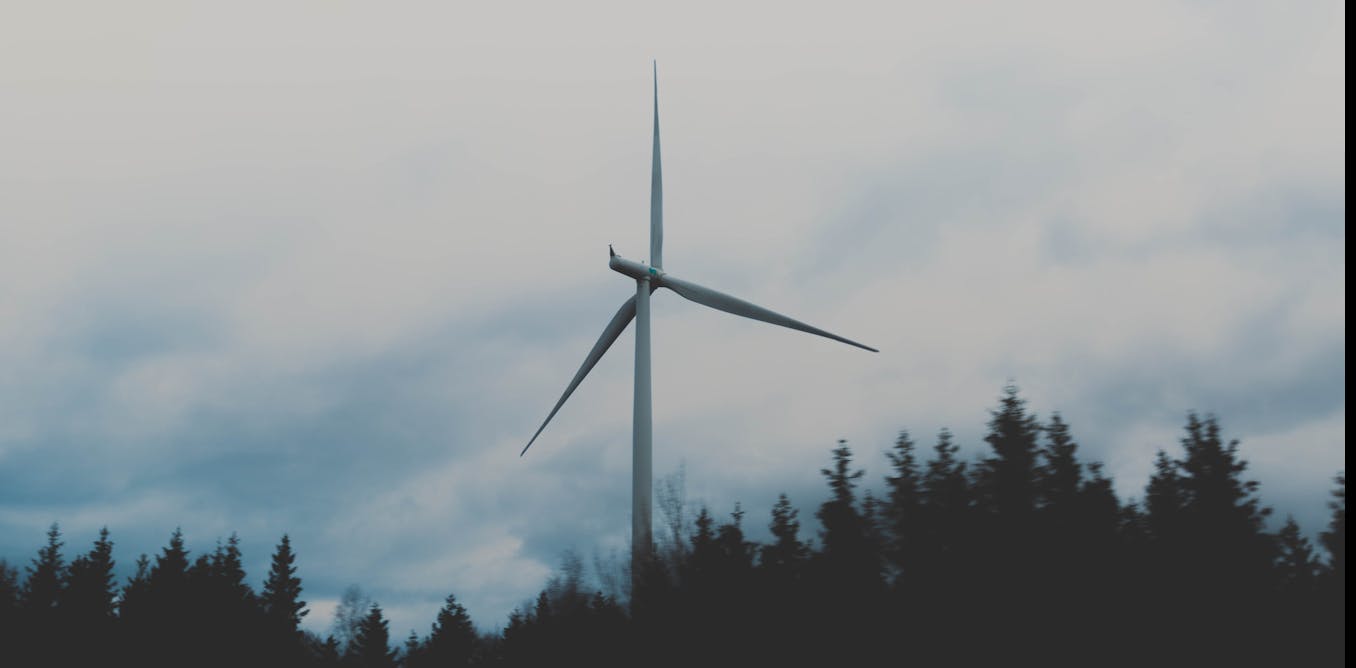
February 10, 2020
How much does generating electricity using renewables boost global warming? You’d probably think not at all, but according to a BBC article published in September 2019, emissions of sulfur hexafluoride (SF₆), “the most powerful greenhouse gas known to humanity”, have been rising rapidly in recent years, and the likely culprit is “the green energy boom”.
SF₆ gas is used to insulate electrical installations like wind turbines and was quoted as the industry’s “dirty secret” in the BBC article. The article also claimed that SF₆ emissions to the atmosphere in 2017 had the same warming effect as adding an extra 1.3 million cars to roads across the UK and the EU.
Read more: Not so fast: why the electric vehicle revolution will bring problems of its own
Since then, concerns about the climate impact of SF₆ have cropped up in a few different stories. The facts about SF₆ in these articles are mostly accurate, but in our view, they give the general impression that the environmental threat of rising SF₆ emissions is on an equal footing with carbon dioxide (CO₂).
How much does generating electricity using renewables boost global warming? You’d probably think not at all, but according to a BBC article published in September 2019, emissions of sulfur hexafluoride (SF₆), “the most powerful greenhouse gas known to humanity”, have been rising rapidly in recent years, and the likely culprit is “the green energy boom”.
SF₆ gas is used to insulate electrical installations like wind turbines and was quoted as the industry’s “dirty secret” in the BBC article. The article also claimed that SF₆ emissions to the atmosphere in 2017 had the same warming effect as adding an extra 1.3 million cars to roads across the UK and the EU.
Read more: Not so fast: why the electric vehicle revolution will bring problems of its own
Since then, concerns about the climate impact of SF₆ have cropped up in a few different stories. The facts about SF₆ in these articles are mostly accurate, but in our view, they give the general impression that the environmental threat of rising SF₆ emissions is on an equal footing with carbon dioxide (CO₂).

SF₆ insulates electrical installations, like this circuit breaker in a geothermal power plant substation. VG Foto/Shutterstock
So, let’s set the record straight.
SF₆ is a man-made, colourless, odourless gas and is indeed the strongest greenhouse gas in the Earth’s atmosphere. On a per molecule basis, SF₆ is approximately 23,500 times more effective at trapping heat than CO₂ and lasts in the atmosphere for about 1,300 years.
SF₆ is an effective electrical insulator for circuit breakers and switches (collectively known as switchgear) and helps prevent accidents and fires. Switchgear is leaky and inevitably emits some SF₆ to the atmosphere.
Renewable energy installations require more switchgear in the electricity grid than fossil fuels, because it takes more solar panels and wind turbines to produce the same electrical output as a single coal power station. So as renewable power generation grows, emissions of SF₆ to the atmosphere should grow too.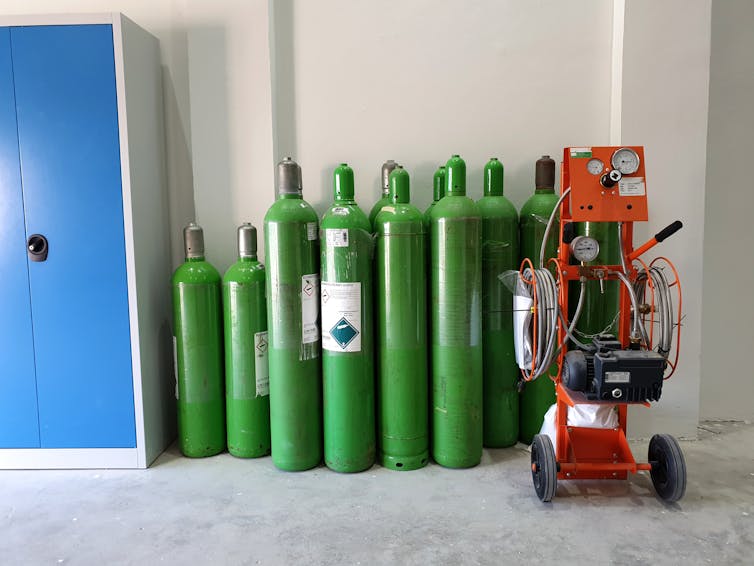
So, let’s set the record straight.
SF₆ is a man-made, colourless, odourless gas and is indeed the strongest greenhouse gas in the Earth’s atmosphere. On a per molecule basis, SF₆ is approximately 23,500 times more effective at trapping heat than CO₂ and lasts in the atmosphere for about 1,300 years.
SF₆ is an effective electrical insulator for circuit breakers and switches (collectively known as switchgear) and helps prevent accidents and fires. Switchgear is leaky and inevitably emits some SF₆ to the atmosphere.
Renewable energy installations require more switchgear in the electricity grid than fossil fuels, because it takes more solar panels and wind turbines to produce the same electrical output as a single coal power station. So as renewable power generation grows, emissions of SF₆ to the atmosphere should grow too.

SF₆ gas often leaks from electrical installations. Somsit/Shutterstock
Increasing SF6
Measurements show that SF₆ has been increasing in the atmosphere. While SF₆ emissions across Europe have more than halved since the mid-1990s, global emissions are increasing, mostly owing to increases in SF₆ emissions from the electrical industry, which are predicted to continue. Even so, it’s important to put the role of SF₆ as a greenhouse gas into context with other greenhouse gases.
The most important sentence in the BBC’s article is this:
Concentrations in the atmosphere [of SF₆] are very small right now, just a fraction of the amount of CO₂ in the air.
Unfortunately, this critical point isn’t developed.
The global concentration of atmospheric CO₂ today is about 410 parts per million, whereas the global concentration of SF₆ is only about 10 parts per trillion. In other words, there is 41 million times more CO₂ in the atmosphere than SF₆.
But since SF₆ is 23,500 times stronger at trapping heat than CO₂, doesn’t this still mean it’s a bigger problem than CO₂ for the climate?
CO₂ is actually a very weak greenhouse gas and is much less efficient at trapping heat compared to other greenhouse gases, such as methane (CH₄) and nitrous oxide (N₂O). The reason why CO₂ has the largest impact on the climate is partly because, like SF₆, it is very long-lived. But mostly, it is because there is so much more CO₂ in the atmosphere than other greenhouse gases (except for water vapour, which is not the main driver of anthropogenic climate change because it is so short-lived).
Global warming potential
Scientists can compare the strength of different greenhouse gases using global warming potentials (GWPs). We say that SF₆ is 23,500 times stronger than CO₂ because this is the value of its GWP on a 100-year timescale, whereas CO₂ has a GWP of 1. So over 100 years, one molecule of SF₆ will have a similar warming effect as 23,500 molecules of CO₂.
Increasing SF6
Measurements show that SF₆ has been increasing in the atmosphere. While SF₆ emissions across Europe have more than halved since the mid-1990s, global emissions are increasing, mostly owing to increases in SF₆ emissions from the electrical industry, which are predicted to continue. Even so, it’s important to put the role of SF₆ as a greenhouse gas into context with other greenhouse gases.
The most important sentence in the BBC’s article is this:
Concentrations in the atmosphere [of SF₆] are very small right now, just a fraction of the amount of CO₂ in the air.
Unfortunately, this critical point isn’t developed.
The global concentration of atmospheric CO₂ today is about 410 parts per million, whereas the global concentration of SF₆ is only about 10 parts per trillion. In other words, there is 41 million times more CO₂ in the atmosphere than SF₆.
But since SF₆ is 23,500 times stronger at trapping heat than CO₂, doesn’t this still mean it’s a bigger problem than CO₂ for the climate?
CO₂ is actually a very weak greenhouse gas and is much less efficient at trapping heat compared to other greenhouse gases, such as methane (CH₄) and nitrous oxide (N₂O). The reason why CO₂ has the largest impact on the climate is partly because, like SF₆, it is very long-lived. But mostly, it is because there is so much more CO₂ in the atmosphere than other greenhouse gases (except for water vapour, which is not the main driver of anthropogenic climate change because it is so short-lived).
Global warming potential
Scientists can compare the strength of different greenhouse gases using global warming potentials (GWPs). We say that SF₆ is 23,500 times stronger than CO₂ because this is the value of its GWP on a 100-year timescale, whereas CO₂ has a GWP of 1. So over 100 years, one molecule of SF₆ will have a similar warming effect as 23,500 molecules of CO₂.
 Atmospheric data from NOAA, GWP values from IPCC Working Group I Fifth Assessment Report (2013), Author provided
Atmospheric data from NOAA, GWP values from IPCC Working Group I Fifth Assessment Report (2013), Author providedBut crucially, GWPs do not include any information about how much of a gas there is in the atmosphere. A crude way to assess the impact of each gas on the climate is to multiply the current atmospheric concentration by the GWP. While this approach is very simplistic, it’s still useful for putting the impact of SF₆ in context. The result looks like this.
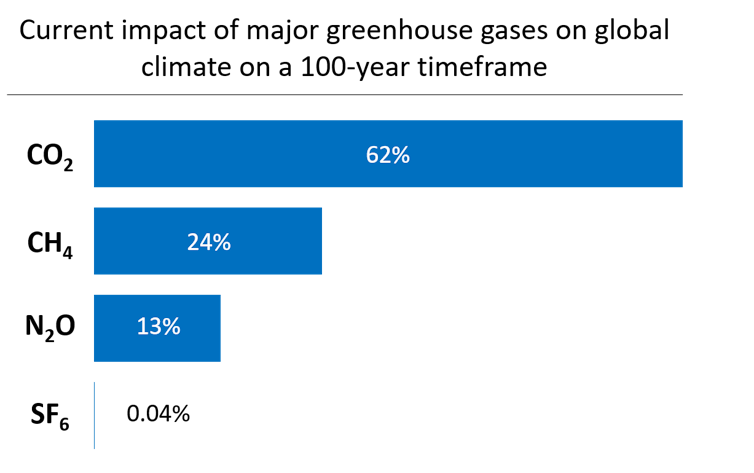
Penelope Pickers, Author provided
From the previous table, we can also say that every year the CO₂ humans add to the atmosphere has 350 times more warming impact than the SF₆ that’s added. Even if the global installed base of SF₆ increases by 75%, as stated by the BBC article, the impact on the climate will be very small compared to the impact from other greenhouse gas emissions.
Decarbonisation first
SF₆ is a very powerful greenhouse gas and its long lifetime will mean that it affects the climate for thousands of years. Its emissions should be regulated and reduced, and governments should encourage the development of alternative electrical insulators to SF₆. It’s important to continue monitoring this gas in the atmosphere to ensure that strategies to reduce emissions are working, but the contribution of SF₆ to climate warming is a very small fraction (0.04%) and decarbonisation should remain the world’s key focus.
CO₂ emissions are still rising every year and if they don’t rapidly fall then limiting the global average temperature increase to 1.5℃, an international priority, could slip out of reach by 2027.
In her 1993 Nobel Prize lecture, the writer Toni Morrison said that language is an act with consequences. Journalists know this: working with words is their trade. We feel that the BBC’s SF₆ article sowed unreasonable doubt about the overall climate benefits of renewable energy. In fact, the climate benefits arising from generating more renewable energy are clear and, in this case, we believe the BBC dangerously prioritised a catchy headline over content by neglecting to put the facts about SF₆ in context
Stephen Dorling
Chair Professor in Atmospheric Science, University of East Anglia
Disclosure statement
Dr Penelope Pickers receives funding from the Natural Environment Research Council (NERC), and from the Integrated Carbon Observation System (ICOS) project, run under the auspices of the European Strategy Forum on Research Infrastructures (ESFRI).
Grant Forster receives funding from the Natural Environment Research Council (NERC) and from the National Centre for Atmospheric Sciences (NCAS).
Stephen Dorling receives funding from the NERC, InnovateUK, the European Union and DfID. He is Chief Executive of Weatherquest Ltd.

From the previous table, we can also say that every year the CO₂ humans add to the atmosphere has 350 times more warming impact than the SF₆ that’s added. Even if the global installed base of SF₆ increases by 75%, as stated by the BBC article, the impact on the climate will be very small compared to the impact from other greenhouse gas emissions.
Decarbonisation first
SF₆ is a very powerful greenhouse gas and its long lifetime will mean that it affects the climate for thousands of years. Its emissions should be regulated and reduced, and governments should encourage the development of alternative electrical insulators to SF₆. It’s important to continue monitoring this gas in the atmosphere to ensure that strategies to reduce emissions are working, but the contribution of SF₆ to climate warming is a very small fraction (0.04%) and decarbonisation should remain the world’s key focus.
CO₂ emissions are still rising every year and if they don’t rapidly fall then limiting the global average temperature increase to 1.5℃, an international priority, could slip out of reach by 2027.
In her 1993 Nobel Prize lecture, the writer Toni Morrison said that language is an act with consequences. Journalists know this: working with words is their trade. We feel that the BBC’s SF₆ article sowed unreasonable doubt about the overall climate benefits of renewable energy. In fact, the climate benefits arising from generating more renewable energy are clear and, in this case, we believe the BBC dangerously prioritised a catchy headline over content by neglecting to put the facts about SF₆ in context
---30---
Authors
Penelope Pickers
Senior Research Associate in Environmental Science, University of East Anglia
Penelope Pickers
Senior Research Associate in Environmental Science, University of East Anglia
Grant Forster
Research Fellow in Atmospheric Science, University of East Anglia
Research Fellow in Atmospheric Science, University of East Anglia
Stephen Dorling
Chair Professor in Atmospheric Science, University of East Anglia
Disclosure statement
Dr Penelope Pickers receives funding from the Natural Environment Research Council (NERC), and from the Integrated Carbon Observation System (ICOS) project, run under the auspices of the European Strategy Forum on Research Infrastructures (ESFRI).
Grant Forster receives funding from the Natural Environment Research Council (NERC) and from the National Centre for Atmospheric Sciences (NCAS).
Stephen Dorling receives funding from the NERC, InnovateUK, the European Union and DfID. He is Chief Executive of Weatherquest Ltd.
We believe in the free flow of information
Republish our articles for free, online or in print, under Creative Commons licence.Republish this article
Republish our articles for free, online or in print, under Creative Commons licence.Republish this article
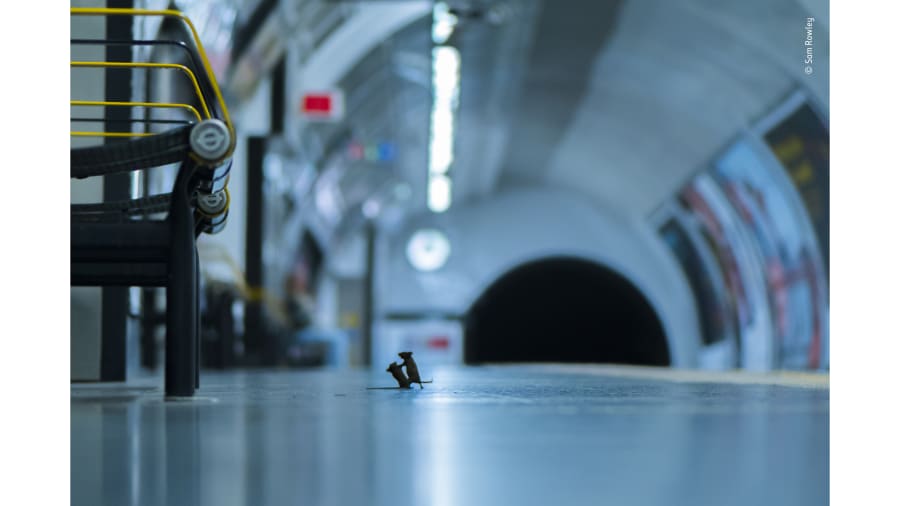







/arc-anglerfish-tgam-prod-tgam.s3.amazonaws.com/public/VI7JX3DUJVGLPLRTEO2RAUWAGA.jpg)



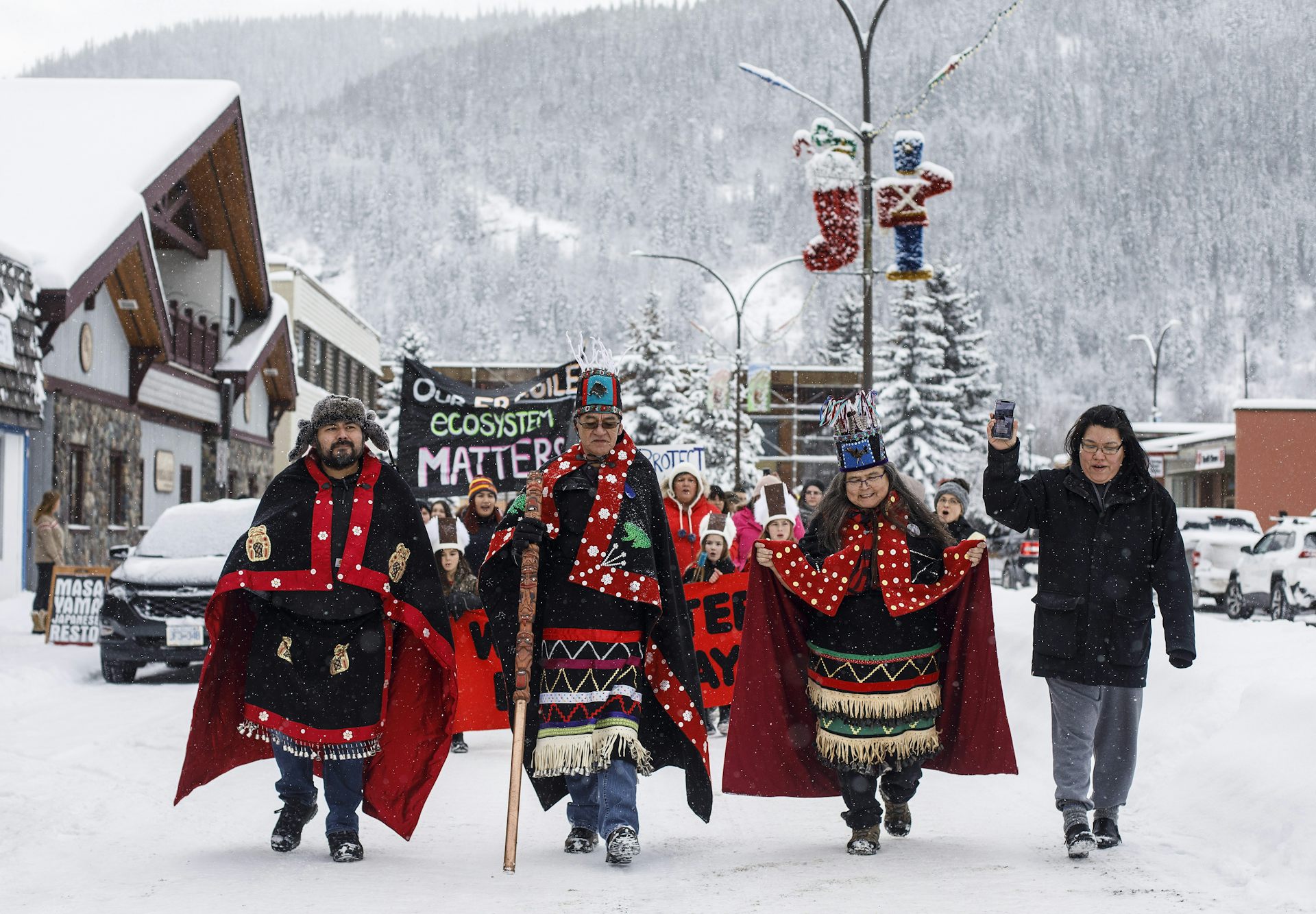
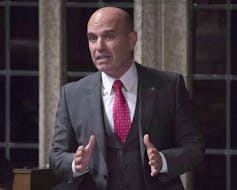
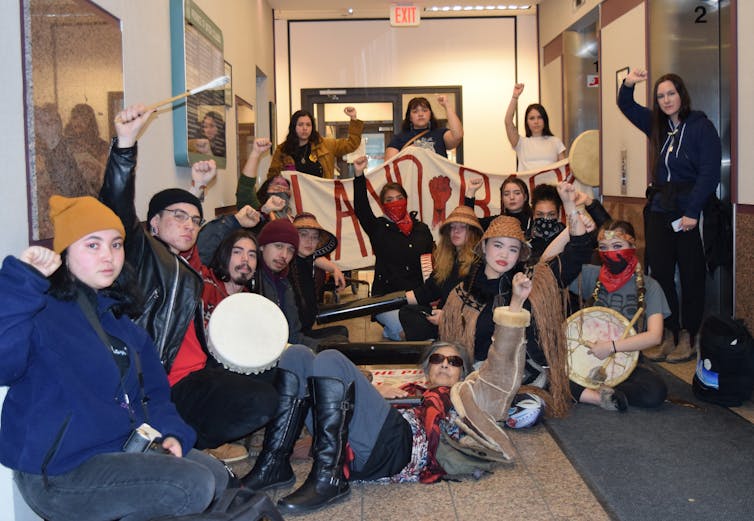
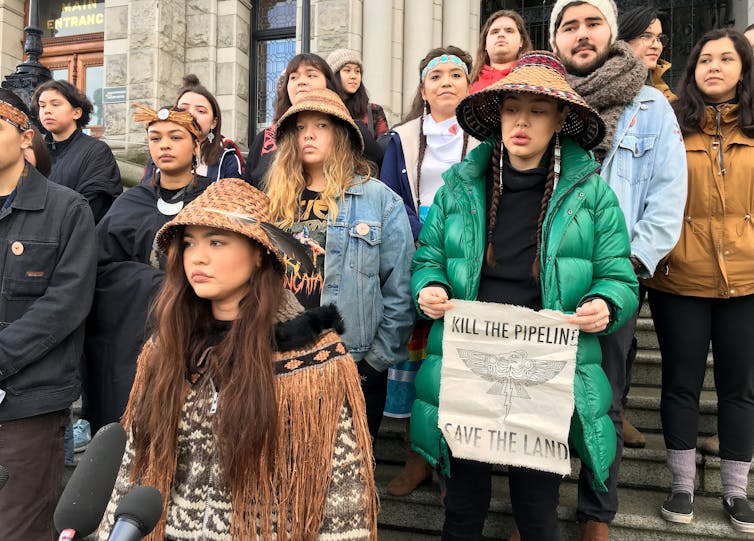
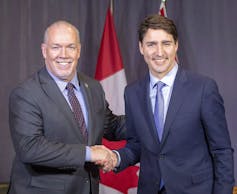


/arc-anglerfish-tgam-prod-tgam.s3.amazonaws.com/public/EXIITH6YYRB4TK7VDV25WOWXQU.JPG)
/arc-anglerfish-tgam-prod-tgam.s3.amazonaws.com/public/DW6RV6DDDNB6LH6RY7L3X7IA6U.JPG)
/arc-anglerfish-tgam-prod-tgam.s3.amazonaws.com/public/KLTMSETO6FCF7BR7EZD3P5ULWA.JPG)
/arc-anglerfish-tgam-prod-tgam.s3.amazonaws.com/public/XAG3AVZDI5FT7ED7LYRN6P2TLI.JPG)
/arc-anglerfish-tgam-prod-tgam.s3.amazonaws.com/public/73EW33THURD3DIYPJXSODJV5BQ.jpg)